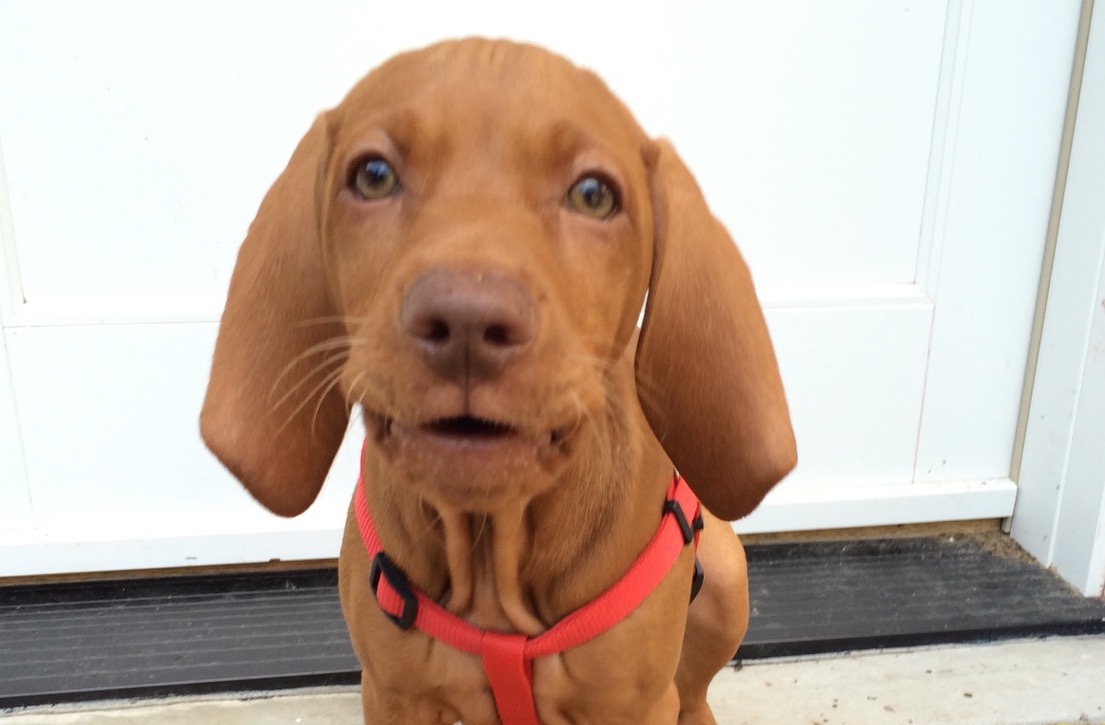Puppy Training
It’s puppy season! Spring is here and with it, many new furry family members. Two things we all know about puppies – they are super cute and a ton of work their first year. Even though the first year is a ton of work training your new baby, it is so, so important.
You want to put in all the time and energy it takes now because over the next (approximately) 7-15 years you will reap the rewards of a well trained dog. Some of the main points to focus on during training are what you want their sleeping situation to look like, how you want them to walk on leash, cutting out nipping and other bad behaviours, listening to commands and of course potty training. The last tip I am going to touch on is socialization – to me this is such a big one that sometimes gets passed over when people think about training their pup.
It’s important to have a plan when you are deciding where your little one will be sleeping at night. It’s okay if that plan will change after their first year but the number one thing puppies need during training is consistency. For example, if you are crate training during the first year (which I highly recommend) you will want to crate train overnight in the living room or in your bedroom if that is where they will be sleeping later in life.
I recommend crate training for a few reasons. First, when your puppy is alone you don’t have to worry about what they are getting into, which could be dangerous or expensive or both. Second, it gives you the opportunity to be watching them when they’re out and about and correct them immediately should you need to (and you will need to). Third, it becomes routine for them and familiar for them. This also helps if you are going to new places and bring your pup as they can have their safe space with them.
Setting your puppy up for success will make potty training easier. If your puppy starts moving around during the night, let them outside to do their business. As they get older and can go longer you can establish a bedtime and wakeup time but it can take a while. During the day, they will need even more potty brakes because they are awake during that time. It is also helpful to pick a word as their command when you’d like them to do their business. Our word is bathroom so that it encompasses both 1&2. Another good thing to do when potty training is getting them used to going in a yard and on walks so that you aren’t tied to one of the other when your puppy needs to go out.
When it comes to leash training it can be helpful to decide which side you want to walk your pup on. A couple examples, we now have a stroller so having your dog walking on one side and not weaving back and forth makes for a much more enjoyable walk for everyone. Before that, Audrey was trained to on the left so whenever I start with a new dog, I see if they walk on the left together or on the right and then I always walk them on the same side. This can be done with treat reward or verbal commands and appraisal. Most dogs love to go for walks but puppies don’t always love their leashes or walking in a straight line.
Once leash training is complete and your puppy is doing well with their commands; sit, here, come, with me. Then it is a good time to start off-leash training. A couple great ways to off-leash train are an empty dog park and using other dogs that are already trained off leash. Empty dog park, or another large fenced in space is great because your dog will have the distractions of different smells and distance. It is best to use rewards for this and practice being able to get their attention and call them to come to you. Once they have this down, they are ready for the trails!
Dogs and puppies are best behaved when they have been stimulated and exercised so trails and training are a great way to accomplish that. Dogs are pack animals and puppies love looking up to dogs. If they are with other dogs following commands and their pack leader (you), they too are extremely likely to follow suit. They will be proud to be using their new skills you’ve taught them.
Puppies love to play and love to nip. If your puppy gets playful and starts to nip your hands, feet, etc. hand them a toy they are allowed to play with. If this doesn’t do the trick then walk away and no more playtime.
My last tip, and to me the most important and probably least touched on when people think about training their puppy, is socialization. Most people know, you want to expose your puppy to dogs with different temperaments, young dogs, old dogs, playful dogs, dogs that don’t want to play, so they can learn these cues and be able to be with other dogs in different settings. However, what most people don’t think about is that your also want your dog to be in different settings and with different people as well. Have them exposed to small children, elderly, loud spaces and quiet spaces. Stores that allow dogs on leash and family get-togethers are great training spaces as well.
These are all just little things I’ve picked up after 8 years of watching puppies. McCann Professional Dog Trainers in Flamborough is a great facility for you and your puppy or dog to learn together. We did 3 levels with Audrey and they also have agility training. It’s worth the drive from Oakville and I cannot recommend them enough.

